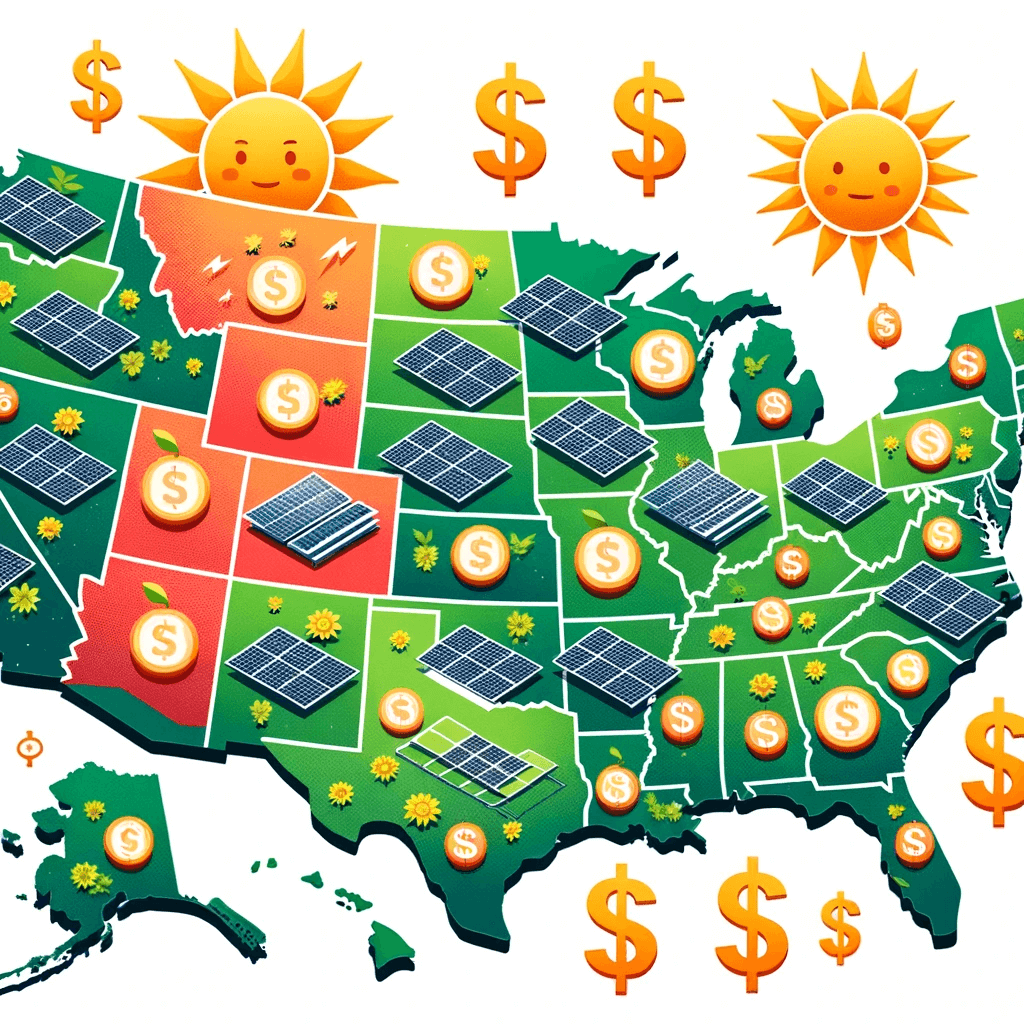Unveiling New Advances in Solar Panels
Intro to Solar Advancements
Solar technology is evolving rapidly, ushering in a new era of clean and sustainable energy solutions. This article reviews the latest advances in solar cell technology, focusing on new solar cell technologies, breakthroughs in solar panel materials, and advances in solar energy storage. From pyramid lenses to ultralight fabric solar cells, these innovations are the key to a bright future. Immerse yourself in the world of new solar technology and its transformative potential.
Advances in Solar Cell Technology
There have been tremendous advances in solar cell technology, taking the efficiency and performance of solar panels to new levels. A notable innovation includes using pyramidal lenses; inspired by the intricate design of insect eyes. These lenses increase the efficiency of solar panels by focusing sunlight onto small, highly efficient solar cells. Pyramid lenses concentrate sunlight, allowing the module to generate more power while reducing surface area, making it an ideal choice for space-constrained urban environments.
Another breakthrough development is the emergence of ultralight fabric solar cells. These thin, flexible solar cells can be woven into textiles to create solar-powered clothing and accessories. This technology allows outdoor enthusiasts, hikers, and even soldiers to generate electricity on the go while staying connected to their devices. Ultralight fabric solar cells make solar energy portable and seamlessly integrated into everyday life.
A Breakthrough in Solar Panel Materials
To increase the performance of solar modules, researchers are constantly looking for materials with new and improved properties. Perovskite solar cells have emerged as a promising advance. These high-efficiency solar cells offer higher light absorption and cost efficiency compared to conventional silicon-based cells. Perovskite solar cells have the potential to revolutionize solar energy systems by achieving higher energy conversion efficiencies while being suitable for a wide range of applications.
Another possibly interesting development is the rise of multijunction and tandem solar cells. By incorporating multiple layers of semiconductor materials, these cells capture a larger spectrum of sunlight, resulting in higher energy conversion efficiency. Originally developed for space applications, multi-junction solar cells are now being deployed in ground-based installations, maximizing energy yield even under harsh environmental conditions. Tandem solar cells, which combine different materials with complementary absorption properties, are gaining attention as a way to improve overall system performance.
One of the challenges in harnessing solar energy is effectively storing power when sunlight is unavailable. However, recent advances in photovoltaic technology are beginning to solve this problem. Advanced battery technologies such as lithium-ion batteries and flow batteries enable efficient energy storage and discharge, ensuring a stable and reliable power supply. These storage systems allow us to store excess solar energy during the day and use it at night or when the sun is low. In addition, new concepts such as solar fuel production and solar thermal storage will be explored to convert and store solar energy into alternative forms for longer-term use. The future of new photovoltaic technologies:
As new photovoltaic technologies continue to evolve, they promise widespread adoption and integration in the future. Innovations such as pyramid lenses, ultralight fabric solar cells, and advanced storage solutions combine to create more efficient and aesthetically pleasing solar systems. The seamless integration of solar panels into everyday objects and structures, such as solar skins and building-integrated photovoltaics (BIPV), will likely become commonplace, enabling renewable energy production without compromising architectural aesthetics.
Advancements in Solar Power Storage
One of the challenges in solar energy utilization is effective power storage for times when sunlight is not available. However, recent breakthroughs in solar power storage technologies are addressing this concern. Advanced battery technologies, such as lithium-ion and flow batteries, are enabling efficient energy storage and discharge, ensuring a steady and reliable power supply. These storage systems allow excess solar energy generated during the day to be stored and used during the night or during periods of low sunlight. Additionally, emerging concepts like solar fuel production and solar thermal storage are being explored to convert and store solar energy in alternative forms for extended usage.
The Future of New Solar Technology
As new solar technologies continue to evolve, the future holds immense promise for widespread adoption and integration. The convergence of innovations such as pyramidal lenses, ultralight fabric solar cells, and advanced storage solutions may lead to more efficient and aesthetically appealing solar installations. The seamless integration of solar panels into everyday objects and structures, such as solar skins and building-integrated photovoltaics (BIPV), will likely become commonplace, promoting renewable energy generation without compromising architectural aesthetics.
Frequently Asked Questions (FAQ)
-
The most efficient solar power technology is currently based on multi-junction solar cells. These cells utilize multiple layers of semiconductor materials to capture a broader spectrum of sunlight, resulting in higher conversion efficiencies than traditional silicon-based solar cells.
-
The future of solar energy holds exciting possibilities. Advancements in perovskite solar cells, tandem solar cells, and other emerging technologies show great potential for higher efficiencies and lower production costs. Additionally, research in solar fuels, such as hydrogen production through water splitting, may enable efficient energy storage and transportation using solar energy.
-
The most common solar technology currently in use is photovoltaic (PV) solar panels. These panels consist of silicon-based solar cells that convert sunlight directly into electricity. PV solar panels are widely deployed in residential, commercial, and utility-scale applications, driving the growth of solar energy globally.
-
Yes, the cost of solar energy has been consistently declining over the years, and this trend is expected to continue in the future. Advancements in technology, economies of scale, and improved manufacturing processes are contributing to the decreasing cost of solar panels. Additionally, innovations in energy storage and grid integration are further optimizing the overall economics of solar energy systems.
Key Takeaways:
Advancements in solar cell technologies, such as pyramidal lenses and ultralight fabric solar cells, are revolutionizing energy capture and improving overall system efficiency.
Breakthroughs in solar panel materials, including high-efficiency perovskite solar cells and multi-junction solar cells, are enhancing light absorption and power conversion efficiency.
Solar power storage advancements, such as advanced battery technologies and solar fuel production, are addressing the challenge of energy storage for times of limited sunlight.
The future of solar energy technology includes the seamless integration of solar panels into everyday objects and structures, such as solar skins and building-integrated photovoltaics (BIPV).
The decreasing cost of solar energy, driven by technological advancements and economies of scale, makes it increasingly affordable and accessible.
Conclusion
As the world embraces renewable energy, emerging solar technologies are at the forefront of this transformation. The continuous advancements in solar cell technologies, improvements in solar panel materials, and breakthroughs in solar power storage are reshaping the solar energy landscape. These innovations hold immense potential to revolutionize the way we generate and utilize clean energy.
One of the key takeaways from these advancements is the increased efficiency of solar power generation. With pyramidal lenses and multi-junction solar cells, we can harness a greater amount of sunlight and convert it into electricity more effectively. This means that solar panels can generate more power with a smaller surface area, making them ideal for urban environments or spaces with limited available land.
Moreover, the breakthroughs in solar panel materials, particularly perovskite solar cells, offer a cost-effective and highly efficient alternative to traditional silicon-based cells. Perovskite solar cells have the potential to make solar energy more accessible and affordable for a wider range of applications, accelerating the adoption of renewable energy sources.
In addition to improving energy generation, advancements in solar power storage are overcoming one of the main challenges of solar energy utilization – intermittent sunlight. Advanced battery technologies, such as lithium-ion and flow batteries, enable efficient storage of excess energy generated during the day, which can be utilized during periods of low sunlight or at night. This ensures a continuous and reliable power supply, enhancing the feasibility of solar energy as a sustainable and dependable source of electricity.
Looking ahead, the future of new solar technology is promising. The integration of solar panels into everyday objects and structures, such as solar skins and building-integrated photovoltaics (BIPV), will transform the way we incorporate solar energy into our lives. Imagine buildings with facades and windows that double as power generators, or vehicles with solar-powered surfaces. These advancements not only improve energy efficiency but also enhance aesthetics and promote sustainable design.
One of the most exciting aspects of the ongoing advancements in solar technology is the potential for cost reduction. As manufacturing processes improve and economies of scale come into play, the cost of solar energy continues to decrease. With each passing year, solar power becomes increasingly competitive with traditional energy sources, making it more accessible and affordable for homeowners, businesses, and communities.
In conclusion, the latest advancements and emerging technologies in solar power are transforming the energy landscape. From pyramidal lenses to ultralight fabric solar cells, breakthroughs in solar panel materials to advancements in storage, these innovations offer increased efficiency, improved aesthetics, and cost-effectiveness. As we continue to explore and embrace new solar technology, we move closer to a sustainable and clean energy future. By harnessing the power of the sun, we can create a greener and brighter world for generations to come.





